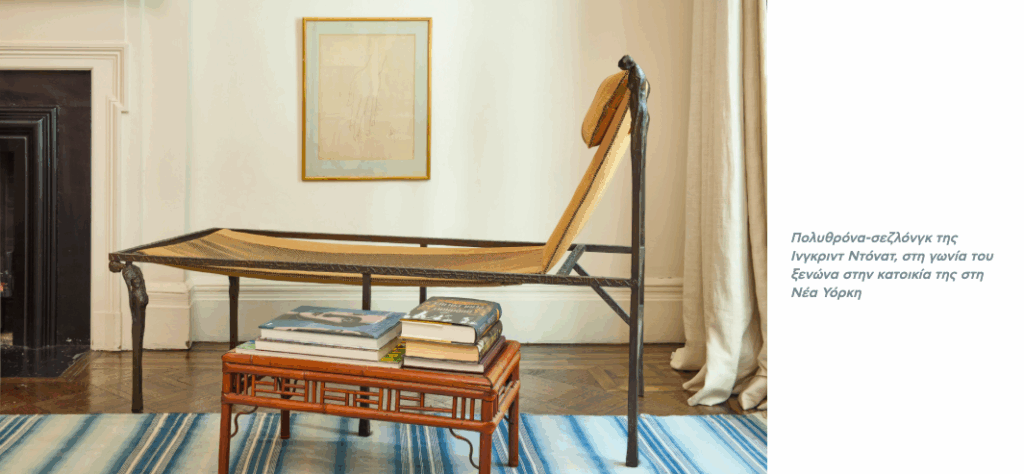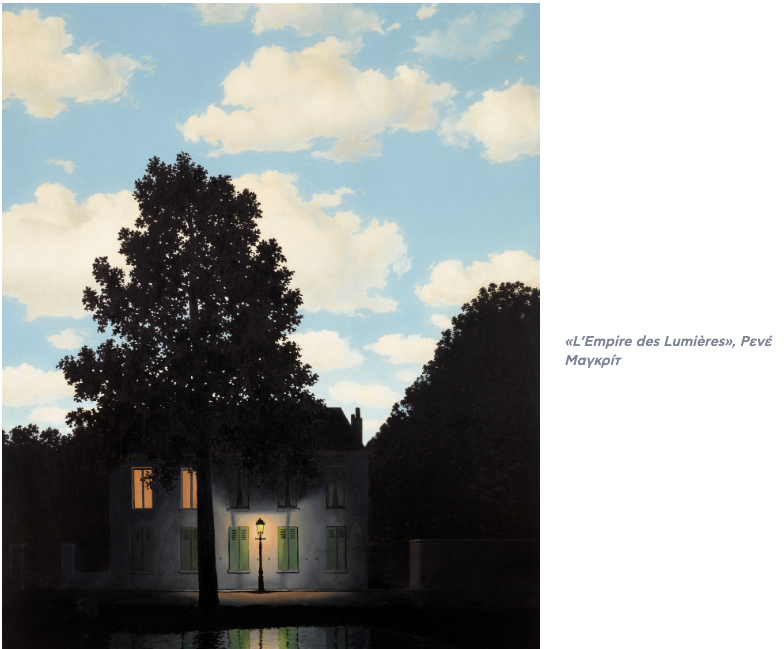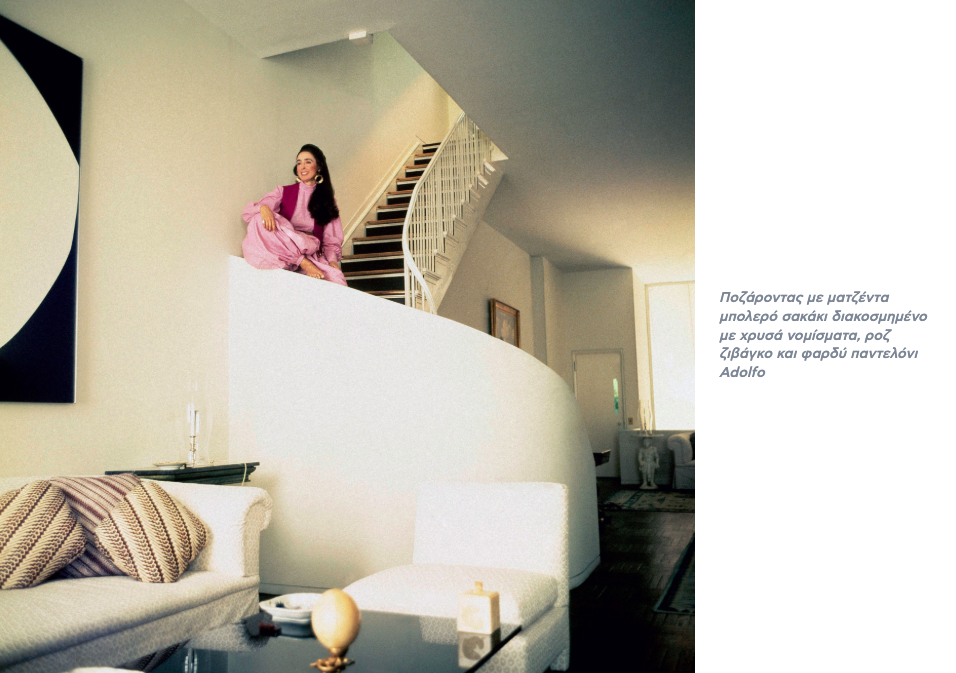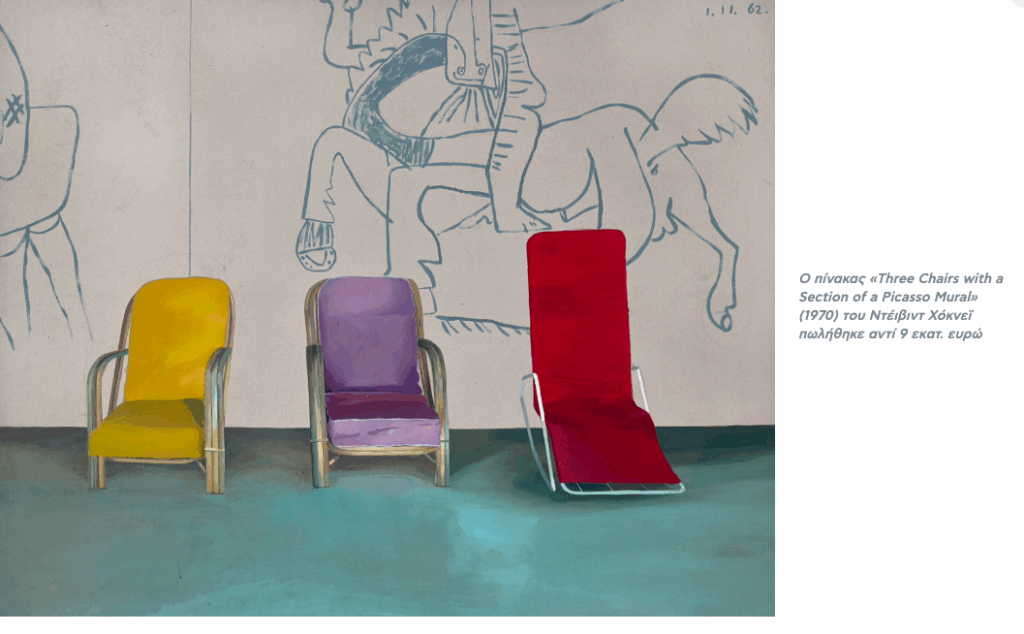The environments she occupied resembled living art exhibits, and her distinctive aesthetic continues to captivate art enthusiasts globally.

Throughout her personal life and career, Ertegun emerged as an unstoppable creative force, playing a critical role in shaping modern aesthetics. Her curated art selections left a lasting imprint on the art world. A recent auction at Christie’s in New York, entitled “Mica: The Collection of Mica Ertegun”, showcased the extraordinary treasures that filled her stunning residences worldwide. The auction sparked a worldwide frenzy among collectors and achieved remarkable sales totaling $183.9 million, making it a monumental success.

Among the highlights were artworks by David Hockney, Joan Miró, and Ed Ruscha. The star of the evening was René Magritte’s celebrated painting “L’Empire des Lumières”, which sold for a groundbreaking $121.1 million, setting a new world record for the artist. Acquired by Ertegun in 1968, the painting displayed her keen eye for both beauty and value. Its captivating contrast of day and night continues to draw audiences in. That evening, Hockney’s “Still Life on a Glass Table” (1971) fetched $19 million, while “Three Chairs with a Section of a Picasso Mural” (1970) sold for over $9 million.

Ertegun’s collection extended beyond modern masterpieces; it also included elegant furniture and decorative objects that showcased her talent for blending diverse periods and styles. Every home she curated — from her Paris apartment to her iconic New York residence and her Bodrum villa — transformed into living galleries meant for her discerning friends. Upholding her lifelong commitment to philanthropy, the proceeds from the auction were donated to humanitarian initiatives, ensuring that Ertegun’s legacy of generosity endures.
A Life of Elegance and Influence
Born in Romania in 1926, Mica Ertegun became a symbol of style, sophistication, and cultural insight. As the spouse of Ahmet Ertegun, co-founder of Atlantic Records, she navigated elite social circles where art, music, and culture intertwined. In the 1960s, Vogue referred to the couple as “comets in New York’s sky, moving in their orbit, leaving behind trails of brilliance,” encapsulating their charisma and refined taste that characterized their homes.
She remarked, “I can’t live with the same paintings all the time,” illustrating her ever-changing collection. Her diverse taste led her to seek artworks with historical and emotional depth — pieces that infused meaning into her interiors.
A highlight from her collection, Joan Miró’s “Peinture (Amour)” (1925), sold for €4 million, further demonstrating the enduring value of her acquisitions.

Interior Designer and Tastemaker
Ertegun’s illustrious career in interior design was marked by a signature blend of harmony and elegance. In 2017, she earned a place in the AD100 Hall of Fame established by Architectural Digest, a prestigious accolade in the design community.
Her fashion sense drew admiration as well. As early as 1971, she was named among the “Best Dressed Women in the World,” and the Metropolitan Museum of Art in New York houses a collection of her dresses.
A dedicated philanthropist, Ertegun donated $41 million to launch the Humanities Scholarship Program at Oxford University, marking it as the largest contribution of its kind in the university’s 900-year history. In 2017, Queen Elizabeth II honored her contributions to charity, education, and cultural relations by appointing her a Member of the Order of the British Empire (MBE).
An Artistic Legacy
The art and objects she collected throughout her life reflect her spirit — a testament to her appreciation for beauty, creativity, and timeless design. From Miró’s abstract compositions to Magritte’s surreal landscapes, each piece mirrored her refined sensibility.

In 1978, renowned photographer Horst captured her in her art-filled Manhattan residence for a Vogue feature dedicated to the surreal. At that time, she was so engrossed in collecting that she left her bedroom walls mostly empty: “I’ve left the walls bare, except for an 18th-century Chinese leather screen,” she commented. “It’s classic — and besides, I can’t see it from the bed.” Even the 20th-century Japanese blue-and-white porcelain vases that adorned her bedside went on to feature in the recent Christie’s auction.

Mica Ertegun lived her life and curated her collection with elegance, intellect, and a steadfast commitment to the arts. Her legacy continues to inspire art lovers and creatives alike.

Ask me anything
Explore related questions














